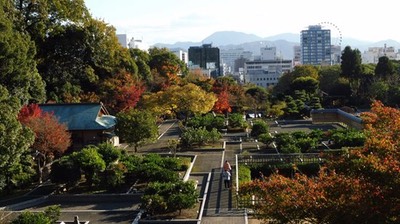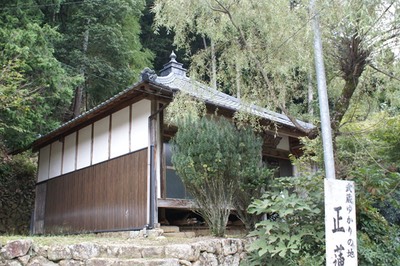The beautiful village of Hirafuku, straddling the Sayō River, is known as the birthplace of Musashi's stepmother, Yoshiko, of whom Musashi is believed to have been very fond. Like Musashi's real mother Yoshiko was also of noble birth. Her clan belonged to a junior line of the Akamatsu and Yoshiko’s father, Bessho Shigeharu, had been the master of Rikan castle, which overlooked the town of Hirafuku, not far from Harima's border with Mimasaka.
Following her divorce from Muni, sometime during the 1590s, Yoshiko moved back to Harima and settled down in the village of Hirafuku. She remarried, this time with a member of her own clan, a man by the name of Tasumi Masahisa. The name Tasumi (rice-field dweller), suggests that he belonged to a family of farmers, although it is believed that Masahira held the position of village elder. Unlike Rikan castle, the Tasumi manor has survived the centuries.
At a loss what to do, Yoshiko entrusted the care of her son to her brother. Though once a warrior, the latter had renounced the world to dedicate himself to a life of study and meditation. Taking on the name of Dōrinbō, he was now living in a small Buddhist temple called the Shōrenan, which was set among a bamboo grove on the edge of the village. It was there that Musashi grew up and spent the rest of his youth—an experience that was to have a seminal influence on his development.
Hirafuku, in Musashi’s day, was one of the stations along the Inaba Kaidō. Many warriors would pass through the village and stay at one of its taverns on their musha shugyō. The village of Hirafuku is also believed to have been the place where Musashi fought his first duel. Known simply locally as the Miyamoto Musashi kettō no ba, or “the place of Musashi's decisive duel,” His opponent in this duel was Known as the Bushū denraiki, describes how:
十三歳の時、新当流の兵法者で有馬喜兵衛という者が、播州にやって来た。浜辺に矢来を結び、金磨きの高札を立てて、試合を望み次第いたす旨、それに書き記した。
When Musashi had reached the age of thirteen a man named Arima Kihei, a warrior of the Shintō school of fencing, visited the province of Harima. He staked out a bamboo fence on a vacant plot of land, and put up a gilded notice saying that he was keen for anyone who wanted to engage with him in a shiai.
Today, the Place of Musashi’s Duel with Arima Kihei is hidden by shrubs and a few trees. Wedged between the Chizu highway and the Sayō River, at the south western foot of the Konzō bridge, a few hundred meters south of Hirafuku station, it would escape the attention of the passing traveler were it not for a gaudy metal signpost announcing kettōba (place of duel) of Miyamoto Musashi.
Any queries of remarks? Launch or join a discussion at our new FORUM


